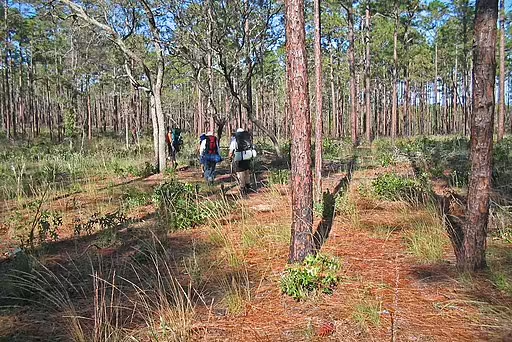Table of Contents for Savannah Milkweed (Asclepias pedicellata)
Savannah Milkweed (Asclepias pedicellata) is a herbaceous perennial that is found in the southeastern United States from North Carolina to Florida. This plant is a host to three butterflies, including the Monarch butterfly (Danaus plexippus). It can grow from 0.5 to 1 foot tall and has flowers that are yellow to green in color that bloom from May to July. It is hardy in zones 7-10.
Taxonomy and Naming of Savannah Milkweed (Asclepias pedicellata)


Taxonomy
Savannah milkweed (Asclepias pedicellata) was named and described by Thomas Walter, in Flora Caroliniana, in 1788. The species has kept this name since and is a member of the Dogbane Family (Apocynaceae).
Meaning of the Scientific and Common Names
Scientific Name
The genus name, Asclepias, is named for the Greek god of healing, Asklepios (Flora of Wisconsin). The species name, pedicellata, is Latin for the pedicellate flowers.
Common Name and Alternative Names
The common name describes the pine savannah habitat of the plant. Another common name, savanna milkweed (without the “h”), also describes the habitat. In one reference this species is called the stalked milkweed (Vascular Plants of North Carolina).
Physical Description

- Plant Type: This plant is a herbaceous perennial.
- Height: 0.5 to 1.5 foot. This is one of the smallest milkweed species.
- Stem: slightly pubescent
- Leaves: The leaves are opposite, simple, entire, sessile, and linear to ovate-lanceolate in shape. The leaves range in size from 1 to 2 inches in length and 0.1 to 0.4 inches in width (Woodson 1954).
- Flower color: yellow, green, white to cream
- Blooming period: This plant blooms from May to July.
- Fruiting type and period: This plant has follicles that mature in July and August.
Range of Savannah Milkweed (Asclepias pedicellata) in the United States and Canada

This milkweed species is found in the southeastern United States. It is considered rare in the states of North Carolina, South Carolina, and Georgia, which is most of its range.
Habitat

This species grows in pine flatwoods of long-leaf pine and savannas that have a fire-ecology (What’s growing in the Garden State). It is also found on sandy areas (Fox 1952).
Hosted Insects
This species is a host for the Monarch Butterfly (Danaus plexippus), the Queen Butterfly (Danaus gilippus), and the Soldier Butterfly (Danaus eresimus).
Other Supported Wildlife

This species is a nectar source to other butterflies, skippers, bees, and wasps during the growing season.
Frequently Asked Questions
Is this plant poisonous?
Like other milkweeds, it has cardiac glycosides (cardenolides) and is considered to be poisonous with ingestion.
Does this plant have any ethnobotanical uses?
The Native American Ethobotanical Database does not list this species in particular, but milkweeds in general have been used for a number of medicinal uses and foods.
How is this plant distinguished from other milkweeds?
This milkweed is similar to swamp milkweed (Asclepias incarnata) and few-flower milkweed (Asclepias lanceolata), but both of the other milkweeds are larger and taller. The flower colors are different as well.
Is this plant invasive?
This species can grow in places that have been disturbed, but there is nothing in the literature indicating that it is invasive.
Gardening with Savannah Milkweed (Asclepias pedicellata)

Hardiness
This species is hardy in zones 7-10. If your garden is within these zones and you have the right growing conditions (soil, moisture and exposure), you may well be able to grow this plant. However, if planted outside of its range, the hosted species may not recognize the plant or be harmed by ingesting a different species with an unfamiliar chemical composition.
Optimal Conditions
This species grows best in places it can receive full sun, are sandy and have moist to mesic (medium moisture) soils.
Note about this species
This species is not in garden cultivation due to its rarity.
References
- Fox, William B. and R.K. Godfrey. 1952. Notes on distribution of North Carolina plants III. Rhodora 54: 165-182.
- Weakley, A.S., and the Southeastern Flora Team. 2022. Flora of the southeastern United States. University of North Carolina Herbarium, North Carolina Botanical Garden.
- Woodson, Robert E. 1954. The North American Species of Asclepias L. Annals of the Missouri Botanical Garden 41: 1-211.



